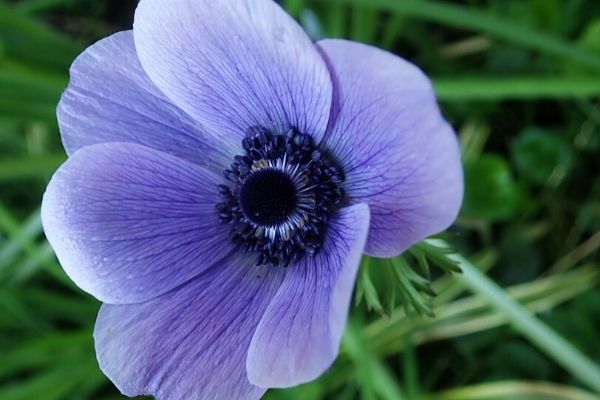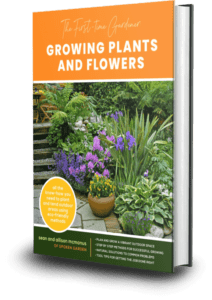Learn about spring-blooming poppy anemone flowers in this gardener’s guide of these beautiful perennials, including plant care, companion plants, and more.
Great for cut flowers, cottage gardens, and more, poppy anemones delight with their dazzling colors, tall stems, and cup-shaped flowers.
Also known as Anemone coronaria or windflower, these flowering bulbs help welcome spring season with their cheery presence.
In this anemone plant profile, you’ll learn about the unique characteristics of this plant as well as basic plant care and companion plants for your landscape.
This post will teach you the skills you’ll need to care for your anemone bulbs before and after they bloom. In the end, you’ll have the confidence needed to grow and care for them on your own.
Quick Plant Care Facts
| Soil Needs | Likes rich, well-draining loamy soil. A mix of sand, silt, clay, and organic matter. |
| Water Needs | Regular watering while growing and flowering. Excessive water or wetness can lead to rot. |
| Sun Exposure | Thrives in partial shade. |
| Cold-Hardiness Zones | Sunset hardiness zones 2-9 and 14-23 for A. blanda; zones 1-4 for A. canadensis. USDA hardiness zones 5-8 for A. blanda; A. canadensis is hard in zones 3-7. |
| Bloom Time | Late spring to early summer. |
| Flower Colors | White, blue, pink, and purplish-red. |
| Mature Height/Width | Grows 10 inches to 24 inches tall and spreads by creeping stems out to 24+ inches. |
| Plant Spacing | Space each plant anywhere from 10 inches to 24 inches apart, depending how fast and dense you want plants to grow together. |
Become a Plant Profile Club member here, if you want more poppy anemone plant care information than this!
[convertkit form=1655951]
If you are looking for Summer Flowering Bulbs to add to your garden, look no further than our ebook
21 Spring-Planted Bulbs For Fantastic Summer Color!
It’s has 60+ pages of summer flowering bulb inspiration and you can get to know the different plant care needs of these 21 gorgeous spring-
planted, summer-flowering bulbs. Whether you are already familiar with bulbs or are just learning about them, this guide explains what bulbs are, defines the 5 different types of bulbs, the correct planting orientation for each of the 5, and much more.
You also get to know each of these 21 spring-planted, summer-flowering bulbs intimately for their care needs like where they will grow, when they flower, different flower colors they are available in, and which online-retailers you can buy your very own to then add to your garden.
Grab your copy now and start planning your spring and summer flower garden TODAY!


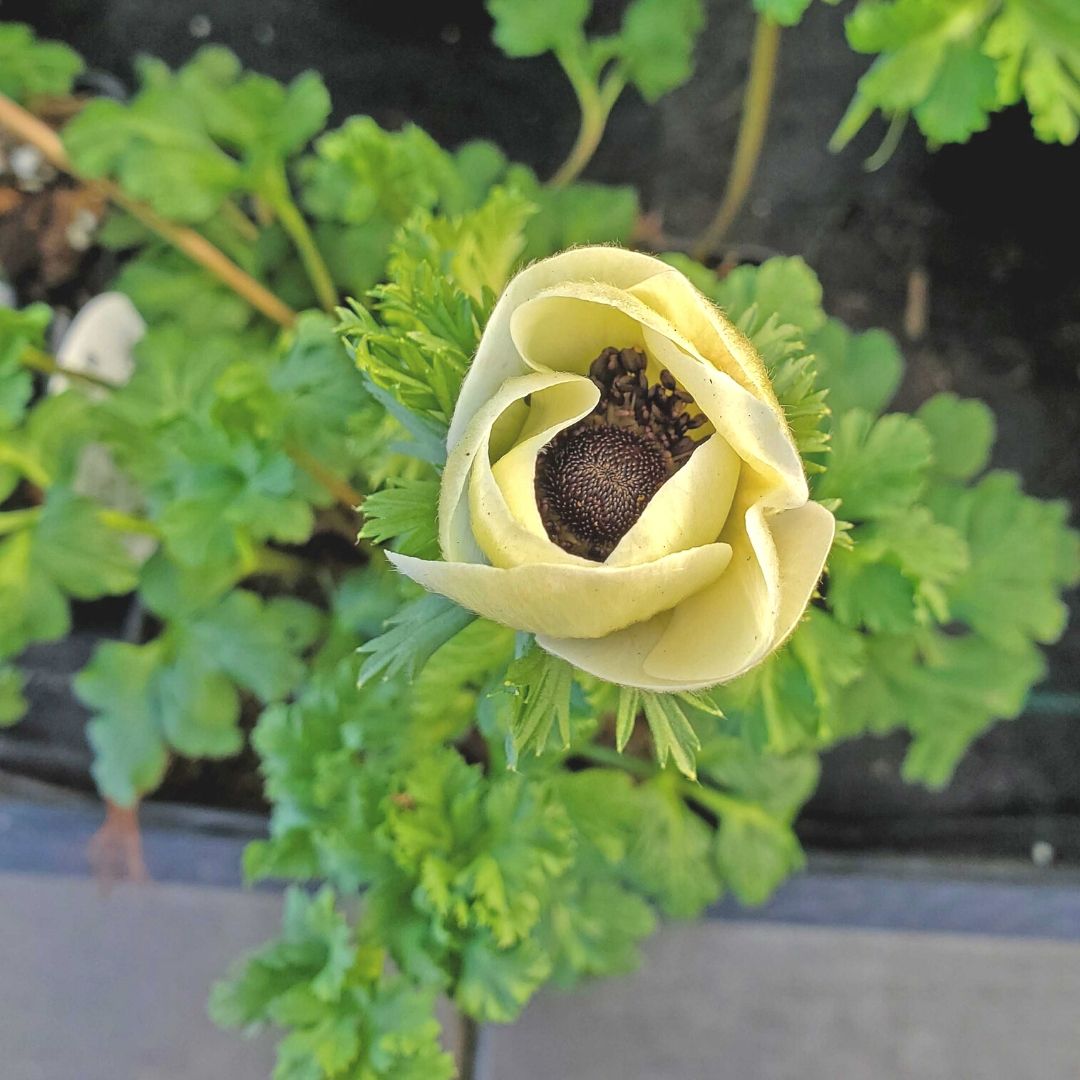
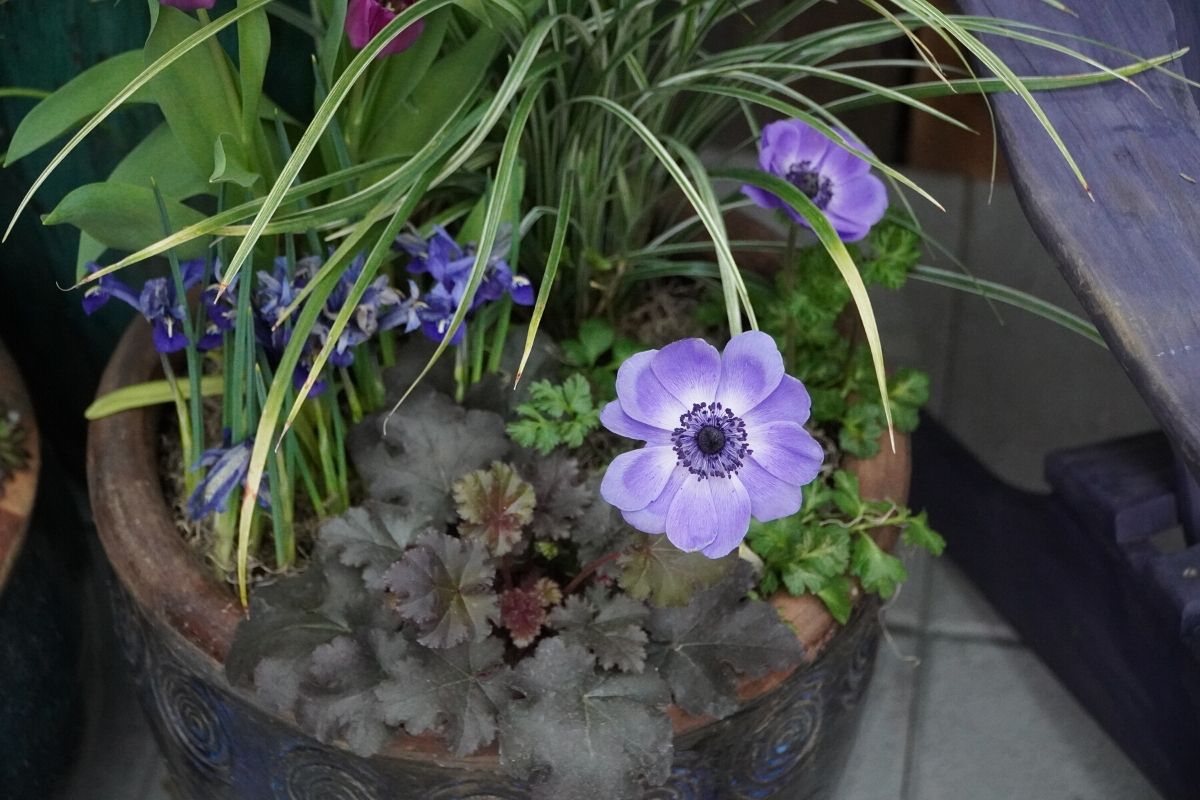


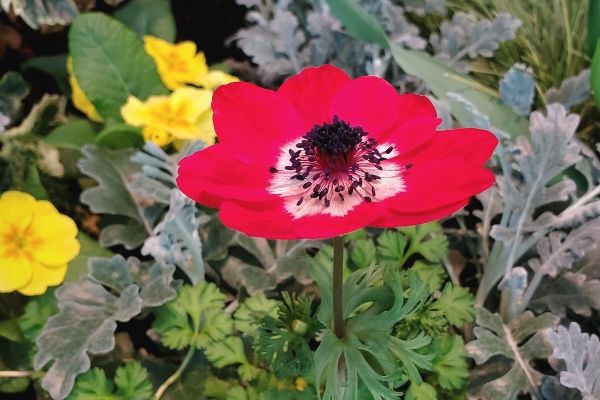
Anemone Plant Care and Handling
The windflower, mostly sold now as hybrids, used to be very popular but the species might not be found in many gardens anymore. In addition, they need to be handled and cared for differently than other anemones.
Plant tuber-bulbs in the fall in hardy areas for spring blooms, and if not hardy to your areas you can then plant in the early spring.
They like well-draining soil, mostly on the sandy side, and are not fans of sitting in any water for any amount of time as they are susceptible to rotting.
As far as sunlight needs, either full sun or partial shade is fine for these gorgeous plants.
Common Anemone Uses in Your Garden
These beautiful plants can be designed into your landscape in several ways, including:
- Grouped in mass plantings,
- Along borders, or
- Used in rock gardens.
Poppy anemones would be perfectly suited in containers or potted plants for spring flowers and later foliage color.
Also, they make wonderful cut flowers and their slightly feathery leaves can add a fine-textured look to any garden.
Poppy Anemone Companion Plants
Anemone bulbs will return each spring season after season, therefore, they could have a lot of options for friends.
You really cannot go wrong with a companion for these flowering bulbs. It simply boils down to your individual preference, color choice, and sunlight needs.
Companion plants to consider:
- Violas, like Johnny Jump Ups
- Pansies
- Daffodils,
- Tulips
- Grape Hyacinth
- Alliums
- Hyacinth
You can find more of poppy anemone care needs, when it flowers, its uses, and more by becoming a Plant Profile Club member.
Anemone coronaria Conclusion
As you’ve read above, spring anemone flowers will add color to your drab winter garden beginning in mid to later winter. Plus, they are very easy to maintain.
Planting anemone bulbs in the fall season and being mindful of their growth needs, your bulbs should pop with color for seasons to come.
Now we want to hear from you!
What other questions do you have about anemones that we didn’t answer above? Let us know by leaving a quick comment below. Thanks!
Want to learn about other plants in your garden? Check out some of our previous plant profiles:
- Daffodils: A Gardener’s Guide and Plant Profile
- Shasta Daisy: A Gardener’s Guide and Plant Profile
- Crocosmia: A Gardener’s Guide and Plant Profile
- Primroses: A Gardener’s Guide and Plant Profile
- Tulips: A Gardener’s Guide and Plant Profile
- Grape Hyacinth: A Gardener’s Guide and Plant Profile
- Winter Pansies: A Gardener’s Guide and Plant Profile
See you in the garden!
~ Sean and Allison
P.S. Find us on Pinterest, Twitter, Facebook, and Instagram so you don’t miss a thing!
Anemone References:

